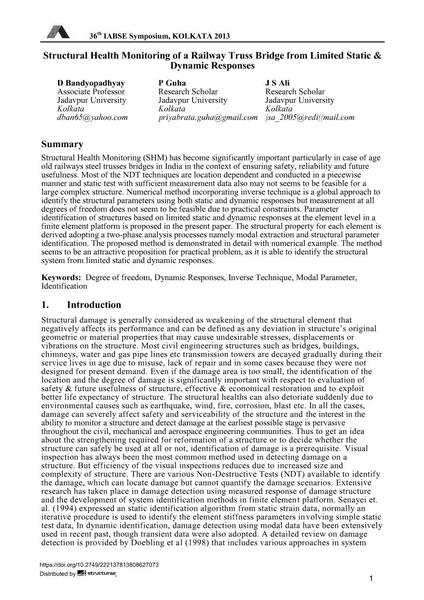Structural Health Monitoring of a Railway Truss Bridge from Limited Static & Dynamic Responses

|
|
|||||||||||
Détails bibliographiques
| Auteur(s): |
D. Bandyopadhyay
P. Guha J. S. Ali |
||||
|---|---|---|---|---|---|
| Médium: | papier de conférence | ||||
| Langue(s): | anglais | ||||
| Conférence: | IABSE Symposium: Long Span Bridges and Roofs - Development, Design and Implementation, Kolkata, India, 24-27 September 2013 | ||||
| Publié dans: | IABSE Symposium Kolkata 2013 | ||||
|
|||||
| Page(s): | 1-8 | ||||
| Nombre total de pages (du PDF): | 8 | ||||
| Année: | 2013 | ||||
| DOI: | 10.2749/222137813808627073 | ||||
| Abstrait: |
Structural Health Monitoring (SHM) has become significantly important particularly in case of age old railways steel trusses bridges in India in the context of ensuring safety, reliability and future usefulness. Most of the NDT techniques are location dependent and conducted in a piecewise manner and static test with sufficient measurement data also may not seems to be feasible for a large complex structure. Numerical method incorporating inverse technique is a global approach to identify the structural parameters using both static and dynamic responses but measurement at all degrees of freedom does not seem to be feasible due to practical constraints. Parameter identification of structures based on limited static and dynamic responses at the element level in a finite element platform is proposed in the present paper. The structural property for each element is derived adopting a two-phase analysis processes namely modal extraction and structural parameter identification. The proposed method is demonstrated in detail with numerical example. The method seems to be an attractive proposition for practical problem, as it is able to identify the structural system from limited static and dynamic responses. |
||||
